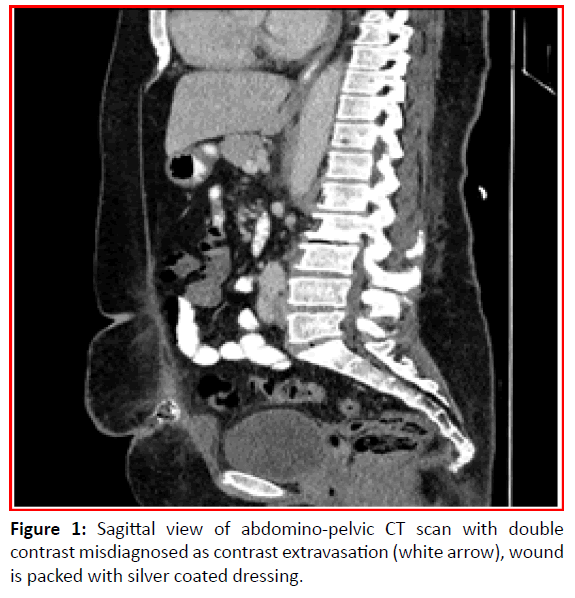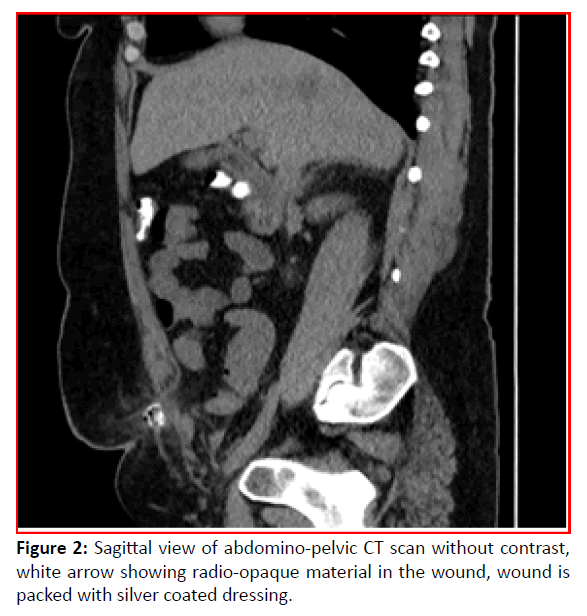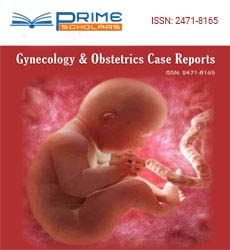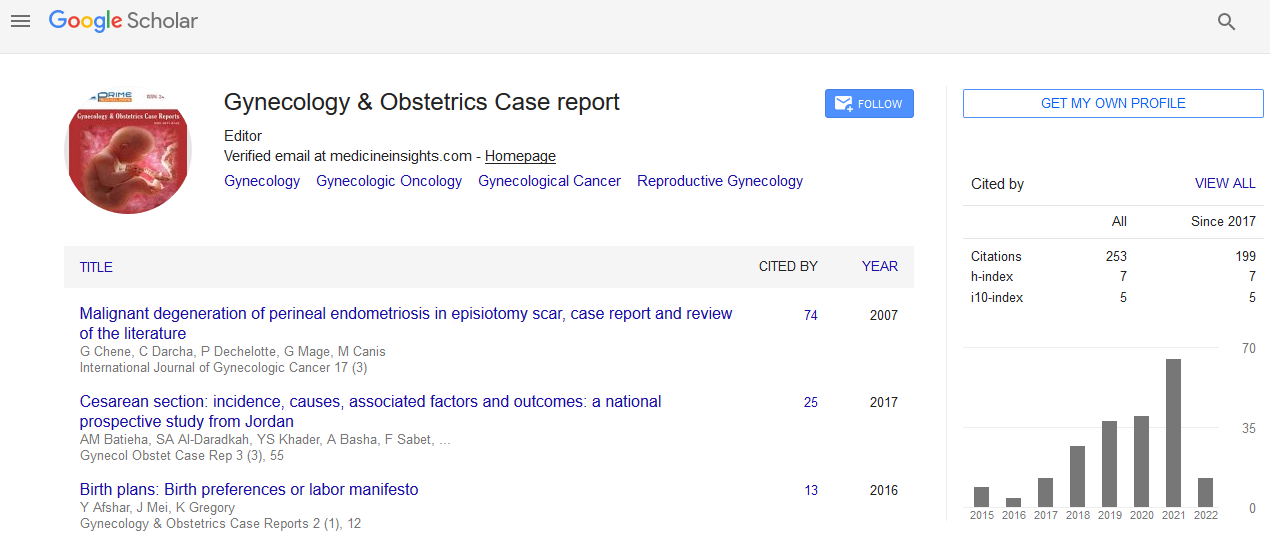Case Report - (2025) Volume 11, Issue 2
Misinterpretation of Silver Coated Wounds Dressing as Oral Contrast Bowel Leak: Case Report
Lujain Lataifeh,
Isam Lataifeh,
Malak Issa and
Afnaan Horani*
Department of Obstetrics and Gynecology, Jordan University of Science and Technology, Irbid, Jordan
*Correspondence:
Afnaan Horani, Department of Obstetrics and Gynecology, Jordan University of Science and Technology,
Jordan,
Tel: + 00962798297758,
Email:
Received: 11-Feb-2025, Manuscript No. ipgocr-25-22604;
Editor assigned: 13-Feb-2025, Pre QC No. ipgocr-25-22604 (PQ);
Reviewed: 25-Feb-2025, QC No. ipgocr-25-22604 (Q);
Revised: 04-Mar-2025, Manuscript No. ipgocr-25-22604 (R);
Published:
11-Mar-2025, DOI: 10.36648/2471-8165.11.2.12
Abstract
Background: Silver-coated dressings, commonly used in wound care for their antimicrobial properties, can create imaging artifacts that may be mistaken for a contrast leak during radiographic studies. This can lead to unnecessary investigations and interventions.
Case presentation: A 51-year-old obese woman who underwent a total abdominal hysterectomy and bilateral salpingo-oophorectomy developed purulent discharge from her wound 9 days post-surgery. Initial CT with contrast suggested a contrast leak, possibly an enterocutaneous fistula. However, after clinical correlation, the radiology team determined the opacity was a misinterpretation. A follow-up CT without contrast showed the opacity persisted, confirming no bowel leakage. The wound was treated with a vacuum dressing to promote healing
Conclusion: This report highlights how silver-coated wound dressings and Povidone Iodine can cause radiographic artifacts that resemble contrast leaks on CT scans, leading to potential misinterpretation. It stresses the importance of radiologist awareness and the use of baseline imaging before contrast to avoid misdiagnosis and inappropriate management.
Keywords
Silver dressing; misinterpretation; Radiopaque; Artifact
Introduction
Silver coated dressings are common in the management of wounds. Anti-microbial activity of silver is well documented in the literature, with several studies that show the action of the metal against a wide variety of organisms, both anaerobic and aerobic bacteria, fungi and viruses. As a metal, imaging studies demonstrate artifacts with the use of silver. However, silver dressings may be mistaken by healthcare personnel for the radiographic appearance of an Omnipaque or gastrograffin (oral contrast) leak since silver gives the appearance of artifacts in imaging studies that could lead to unnecessary investigations, therapies, or interventions. This case report discusses the origins and consequences of this misunderstanding by presenting a case example and discussing methods of preventing diagnostic errors. We believe that increasing awareness of this problem will improve clinical outcomes and avoid unnecessary interventions.
Case Presentation
A 51-year-old obese female patient with a BMI of 41 kg/m2 who underwent a total abdominal hysterectomy and bilateral salpingo-oophorectomy through Maylard incision for menorrhagia due to large uterine fibroid. The procedure went smoothly and without difficulties and there were no bowel adhesions. The skin was sutured using the Vicryl 2-0 subcuticular technique. She had smooth recovery from the surgery and she was released on the 3rd post-operative day with oral Ciprofloxacin. She returned to the emergency department 9 days later, with a substantial volume of purulent discharge from the right angle of the wound with no signs or symptoms of systemic infection. She was admitted, the wound sinus was widely opened to involve the whole length and deep to the abdominal fascia which was checked and found to be intact. Swabs were pathogen-free and the wound was kept opened and packed with a silver coated dressing, Atrauman® Ag (Hartmann), 3 times daily. “An abdominal computerized tomography with oral Omnipaque contrast and intravenous contrast was performed.
Initially an opacity was noted along the course of the transverse wound and was initially reported as an extravasation of contrast media suggesting enterocutaneous fistula (Figure 1). A joint meeting between the treating Gynaecologic oncologist and the radiologist team was held and correlated the operative procedure details and clinical condition with the radiologic findings and decided to treat on clinical basis and to consider this suspected radiologic finding as misinterpretation of the opacity with contrast leak from the small bowel. Two days later, the managing physician packed the wound with Atrauman® Ag dressing and repeated the abdomen CT without contrasts. Surprisingly the previously noted opacity was retained in the wound in the absence of oral contrast in the small bowel as demonstrated in Figure 2. Vacuum dressing was applied to improve wound condition and promote wound healing.

Figure 1: Sagittal view of abdomino-pelvic CT scan with double contrast misdiagnosed as contrast extravasation (white arrow), wound is packed with silver coated dressing.

Figure 2: Sagittal view of abdomino-pelvic CT scan without contrast, white arrow showing radio-opaque material in the wound, wound is packed with silver coated dressing.
Discussions
The antimicrobial activity of silver has been used for hundreds of years in wound care with broad spectrum activity observed against a wide range of bacteria [1]. Several randomized-controlled trials and systematic reviews have demonstrated that dressings that contain nanocrystalline silver are beneficial for wounds that have high bacterial counts and bad odor [2, 3]. Silver-containing dressings also have the advantage of requiring less frequent dressing changes than non-silver-containing dressings, leading to lower pain levels [4]. In contrast, there is very little evidence in favor of silver for noninfected wounds. Multiple meta-analyses and randomized-controlled trials found that nanocrystalline silver-containing dressings were no more effective than gauze for lower-extremity ulcers, [5-7]] chronic noninfected wounds, [8] and pressure ulcers [9].
In this case, an initial misinterpretation of the CT scan study as a contrast leak was made. Since there was very low clinical suspicion of enterocutaneous fistula in this case, the possibility of the silver coated dressings resulting in an artifact led to prompt recognition and management of this problem as wound infection. To confirm our provisional clinical diagnosis, we repeated the abdominal and pelvic CT scan without contrast after dressing with Silver preparation which showed the same opacity. Clinical suspicion in these cases of the possibility of the silver coated dressings resulting in an artifact led to prompt recognition & management of this problem resulting in accurate diagnosis. Hence, based on our report, we advise to have the silver coated dressings removed prior to abdominal or pelvic computerized tomography when oral or rectal Gastrograffin contrast is administered.
Jaber S, et al. [10]. Reported three cases that used different types of silver loaded dressings for the treatment of infected wounds. Computer tomography initially reported the silver loaded dressings as extravasations of the gastrograffin contrast medium. However, once the dressing was removed, the density disappeared. Additionally, Niang I, et al [11], reported linear hyper density in the soft tissues and the articular cavity of the left knee, resembling the appearance of a CT arthrogram with no history of intra-articular contrast injection. The possibility of chondrocalcinosis was deemed unlikely because of the patient age. Upon further inquiry with the emergency staff, it was discovered that a povidone-iodine solution (Betadine®) was employed for wound cleansing. The iodine content in the solution was responsible for enhancing the joint cavity, creating the CT arthrogram-like appearance.
Conclusion
This report highlights the potential for silver-coated wound dressings to cause diagnostic errors due to radiographic artifacts, asserting the importance of radiologist awareness. Our findings showed that silver dressings can resemble contrast extravasation on CT scans, highlighting the importance of enhancing diagnostic radiological techniques, such as pre-contrast baseline imaging.
Silver Coated wound dressings and Povidone Iodine disinfectant solution are clearly radio-opaque dressings that can mimic a gastrograffin contrast leak, leading to miss interpretation of CT reports with the potential for inappropriate management if not promptly recognized.
References
- Abboud EC, Legare TB, Settle JC, Boubekri AM, Barillo DJ, et al. (2014) Do silver-based wound dressings reduce pain? A prospective study and review of the literature. Burns 40: S40-S47.
Google Scholar, Cross Ref, Indexed at
- Secretariat, MA (2009) Management of chronic pressure ulcers: An evidence-based analysis. Ont Health Technol Assess Ser 9 (3): 1.
Google Scholar, Indexed at
- Vermeulen H, van Hattem JM, Storm-Versloot MN, Ubbink DT, Westerbos SJ, et al. (2007) Topical silver for treating infected wounds. Cochrane Database Syst Rev 1: CD005486.
Google Scholar, Cross Ref, Indexed at
- Meekul, J, Chotirosniramit, A, Himakalasa, W, Orrapin, S, Wongthanee, A, et al. (2017) A randomized controlled trial on the outcome in comparing an alginate silver dressing with a conventional treatment of a necrotizing fasciitis wound. Int J Low Extrem Wounds 16(2): 108-113.
Google Scholar, Cross Ref, Indexed at
- O'Meara S, Al-Kurdi D, Ologun Y, Ovington LG, Martyn-St James M, et al. (2014) Antibiotics and antiseptics for venous leg ulcers. Cochrane Database Syst Rev 1: CD003557.
Google Scholar, Cross Ref, Indexed at
- Michaels JA, Campbell B, King B, Palfreyman SJ, Shackley P, et al. (2009) Randomized controlled trial and cost-effectiveness analysis of silver-donating antimicrobial dressings for venous leg ulcers (VULCAN trial). Br J Surg 96 (10): 1147-1156.
Google Scholar, Cross Ref, Indexed at
- Bergin S, Wraight P (2006) Silver based wound dressings and topical agents for treating diabetic foot ulcers. Cochrane Database Syst Rev 1: CD005082.
Google Scholar, Cross Ref, Indexed at
- Storm-Versloot MN, Vos CG, Ubbink DT, Vermeulen H (2010) Topical silver for preventing wound infection. Cochrane Database Syst Rev 3: CD006478.
Google Scholar, Cross Ref, Indexed at
- Norman G, Dumville JC, Moore ZE, Tanner J, Christie J, et al. (2016) Antibiotics and antiseptics for pressure ulcers. Cochrane Database Syst Rev 4: CD011586.
Google Scholar, Cross Ref, Indexed at
- Jaber S, Shehri A, Orf A, AbdelMoeti M, Tayara B, et al. (2014) Misinterpretation of Silver Coated Wounds Dressing as Gastrograffin Bowel Leak: Case Report. Glob J Surg 2 (1): 1-3.
Google Scholar, Cross Ref,
- Niang I, Kayembe A (2024) “Accidental computed arthrography” of an open knee joint injury cleaned with povidone-iodine solution. PAMJ Clin Med 14 (1).
Cross Ref,
Citation: Lataifeh L, Lataifeh I, Issa M and Horani A. (2025) Misinterpretation of Silver Coated Wounds Dressing as Oral Contrast Bowel Leak: Case Report. Gynecol Obstet Case Rep. Vol.11 No.2:12.
Copyright: © Lataifeh L, et al. This is an open-access article distributed under the terms of the Creative Commons Attribution License, which permits unrestricted use, distribution and reproduction in any medium, provided the original author and source are credited.



